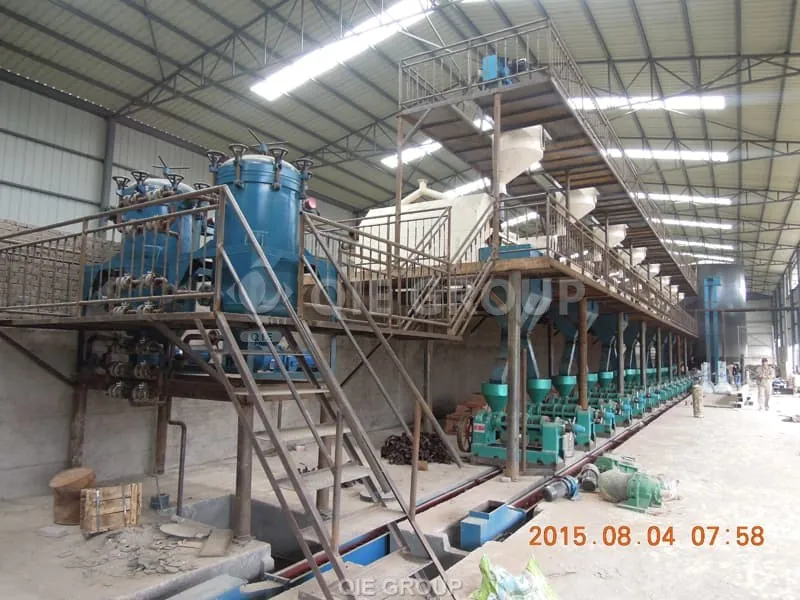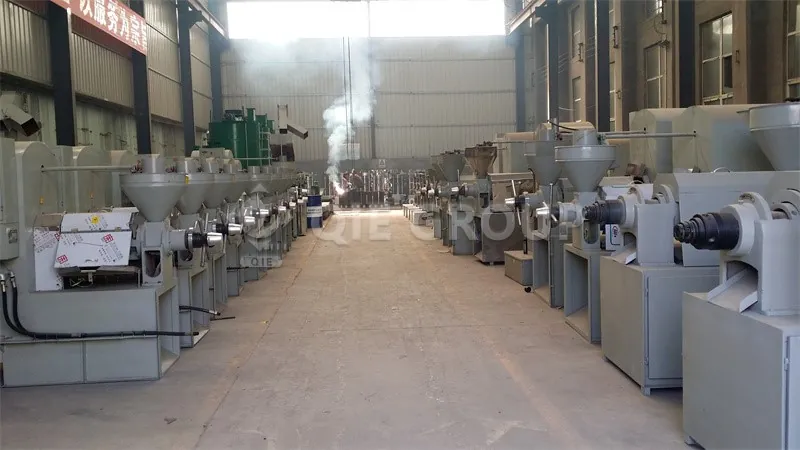What are the steps in the production of sunflower oil?
In business scenarios such as small oil mill processing and large oil and fat enterprise production, sunflower oil production needs to go through key steps such as raw material screening, cleaning, shelling, kernel-shell separation, rolling, steaming, pressing/leaching, and refining. Taking large oil and fat enterprises as an example, the raw material screening link can remove about 5%-10% of impurities and bad seeds; the oil yield of the pressing method is usually 30%-40%, and the leaching method can reach 45%-50%. Through scientific and standardized production processes, high-quality sunflower oil can be produced to meet different market needs.
As a healthy and nutritious edible oil, sunflower oil is deeply loved by consumers. It is rich in unsaturated fatty acids, vitamin E and other nutrients, and has many health benefits such as lowering cholesterol and anti-oxidation. So, what is the production process from plump sunflower seeds to clear and transparent sunflower oil? The following is a detailed introduction to the production steps of sunflower oil.
The production of sunflower oil mainly includes the following links:
Sunflower seed pretreatment
-
cleaning-equipment.html" https: www.qieequip.com products oilseed-cleaning-equipment.html" style="color: red; text-decoration: underline;">cleaning-equipment.html" style="color: red; text-decoration: underline;">cleaning and Impurity Removal: Remove impurities such as stones, metals, stems, and leaves from sunflower seeds to prevent damage to equipment.
-
Dehulling and Kernel-Shell Separation: Sunflower seed shells have a low oil content and affect the color of the oil. After dehulling, the material may still contain some residual shells, which need to be further separated using kernel-shell separation equipment.
-
Crushing and Softening: Crushing ensures the sunflower kernels have a uniform particle size, improving the effect of subsequent flaking-machine.html" https: www.qieequip.com products oilseed-flaking-machine.html" style="color: red; text-decoration: underline;">flaking-machine.html" style="color: red; text-decoration: underline;">flaking. Softening involves adjusting moisture and temperature to enhance plasticity.
-
Flaking: Press the crushed sunflower kernels into thin flakes to break down the cellular structure of the kernels, making it easier for oil to be released from the cells. This also increases the surface area of the material, facilitating subsequent steaming, roasting, and pressing.
-
Steaming and Roasting (Tempering): Feed the flaked material into a steaming and roasting machine. Through heating and stirring, the temperature and moisture of the flakes are adjusted to an appropriate range, inactivating enzyme activity and improving oil fluidity.

Oil extraction (pressing or leaching)
Pressing method: Pre-pressing usually uses a screw press, which applies pressure to the flakes through the rotation and propulsion of the screw shaft, so that the oil is separated from the flakes. The crude oil obtained from pre-pressing contains more impurities and needs to be refined later; the cake enters the leaching process to further extract the oil.
Extraction method: pre-treated sunflower seed flakes → rotary extractor (solvent n-hexane countercurrent extraction) → mixed oil evaporation → crude oil.
Crude oil refining (degumming, deacidification, decolorization, deodorization)
1. Degumming: removal of phospholipids (hydration degumming) and peptized impurities.
2. Deacidification: Reduce free fatty acids (FFA) to prevent oil rancidity.
3. Decolorization: adsorb pigments (chlorophyll, carotenoids) to improve the color of oil products.
4.
Deodorization: remove odorous substances (aldehydes, ketones) and improve oil stability.
After refining, the sunflower oil meets the standards for edible oil and needs to be filled and packaged.
Low investment, you can produce high quality sunflower oil. Are you interested in sunflower oil production line? Contact QIE GROUP now!















